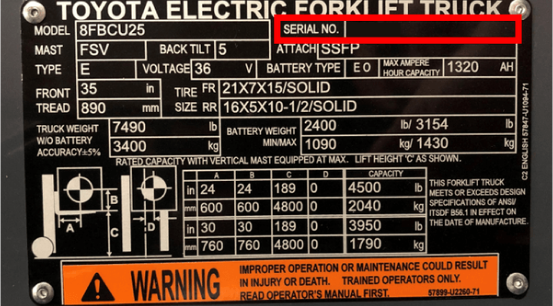Selecting The Right Order Picker Guidance System

Unlike traditional, sit-down forklifts, order pickers travel parallel to racking so that operators can pick products to build out orders. Traveling this close to racking, however, can be a tedious affair. Operators must strike a balance between being close enough to the racking to make the perfect pick, yet still have enough space to travel safely down the aisle without hitting the racking.
Guidance systems such as rail and wire guidance can be useful tools for reducing product, racking, and forklift damage. While both rail and wire guidance systems offer similar benefits, the differences in installation and how they function make each option ideal for some applications over others.
What Is Rail Guidance?
Rail guidance systems include mounted guide rollers and physical rails within the aisles to help VNA (Very Narrow Aisle) forklifts navigate through aisles. Physical rails need to be installed into the ground in front of the racking to set the path on which the forklift runs. Guide rollers installed on both sides of the order picker allow the forklift to contact the rails on each side and continue to travel down the aisle, potentially minimizing damage to the racking, product, and the order picker. Many advanced systems, such as Toyota’s double rail guidance option with auto-center steering have one unique guide roller with a sensor switch that, when contacted, automatically centers the drive tire, enabling the order picker to continue straight through the rest of the aisle.
Since every application varies, it is important to configure the rails and guide rollers appropriately so that operators can work productively and safely within each aisle. The configuration should also cause minimal hindrances to their ability to travel and pick product. In some cases, the rails actually need to be built into the rack depending on the aisle width and available space between the front face of the rack and the rail.
What Is Wire Guidance?
Wire guidance is a control system for VNA (also known as Very Narrow Aisle) forklifts by helping steer them with a powered guidewire buried underneath the ground. The VNA lift trucks have sensors that detect the guidewire and the forklift follows the wire’s path. Travel of the order picker becomes limited to the set confines of the wire’s physical location in the ground. Some wire guidance settings are configurable, such as end-of-aisle slowdown and travel speed that can be set based on your application’s needs.
One advantage of wire guidance systems is that the operator can turn off the guidance system when needed to allow for travel outside of the confines of the wire. This is helpful in certain situations where travel within the confines of the wire limits the forklift’s ability to travel based on the product they are picking and the aisle in which they are operating. Similar to rail guidance, wire guidance can be used in any aisle type, but is most commonly found in narrow and very narrow aisle applications. Wire guidance systems allow the operator to relinquish steering control when the system is active within the aisle, allowing operators to focus more on travel and lift, which can further increase productivity.
Making A Decision
A number of factors can affect your decision about the guidance system you want to purchase. Pricing between the two different systems can vary greatly, especially depending upon the size of your fleet and your warehouse. Wire guidance systems tend to be more expensive to install for both the sensors and equipment added to the forklift and for the wires and electrical installation at your facility.
Next, you have to consider how the two different types of guidance can affect your operation. Applications with larger aisles where the operator must travel between racking on both sides may benefit more from a physical guidance system that would allow that type of travel. In addition, depending on the type, size, and weight of the product you are picking, the distance from the racking required to make a safe pick may vary. Finding the right balance between limiting the distance between the order picker and the racking and optimizing the distance for safe, efficient picking plays a significant role in the choice that you will make.
Remember, guidance systems can provide increased productivity and reduce product damage, but they are not ideal for every application. When selecting the right guidance system, make sure to work with a professional who knows your operation and can guide you through the entire process. Your local Toyota forklift dealer is available to help with designing the optimal layout for your operation to maximize productivity and improve your warehousing efficiency.


